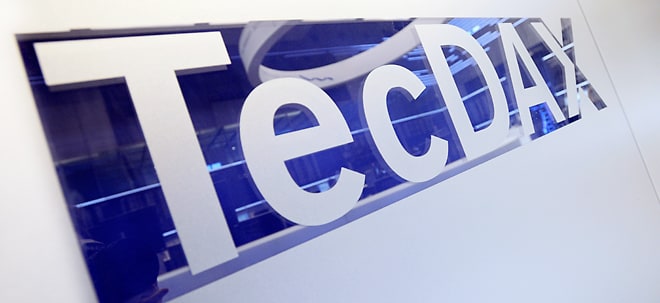Trillions needed to achieve net-zero by 2050 — Wood Mackenzie
Werte in diesem Artikel
The world is currently on course for global warming levels between 2.5˚C and 3˚C by the end of the century, far exceeding the 1.5˚C target outlined in the Paris Agreement with mining and energy companies needing to spend trillions to alter this trajectory, the latest report by Wood Mackenzie shows. The study, published just a day after the United Nations warned the world is falling “miles short” of what’s needed to curb devastating global warming, indicates that an investment of $78 trillion will be needed to change this course and achieve net-zero emissions by 2050.Under the 2015 Paris Agreement, nations committed to limiting global warming to “well below” two degrees Celsius above the average temperatures recorded between 1850 and 1900, aiming for a target of 1.5 degrees Celsius if feasible. Efforts to date have not succeeded in meeting this challenge, the annual “Energy Transition Outlook” from Wood Mackenzie shows.Unlike the UN pessimistic outlook, the Scottish consultancy believes that while major obstacles hinder short-term targets, particularly for 2030, a 2050 net-zero goal remains feasible. Immediate and coordinated global action would be necessary, WoodMac warns.Threats to climate progressA series of global crises, including the Russia-Ukraine conflict, escalating Middle East violence, rising populism in Europe and global trade tensions with China, are undermining the pace of the energy transition, Wood Mackenzie’s vice president head of scenarios and technologies, Prakash Sharma, said. He explains that without urgent policy changes and enhanced investment, a warming trajectory of 2.5˚C to 3˚C could become inevitable.“We are under no illusion as to how challenging the net zero transition will be, given the fact that fossil fuels are widely available, cost-competitive and deeply embedded in today’s complex energy system,” Sharma added. “A price on carbon maybe the most effective way to drive emissions reduction but it’s hard to see it coming together in a polarized environment.”Infographic from: Wood Mackenzie’s Energy Transition Outlook. (Click on image for full size)Key investment are needed across several critical areas, according to WoodMac. As renewable energy sources grow, substantial upgrades to power supply and grid infrastructure are essential to meet the growing demand. Additionally, the need for critical minerals, such as lithium, nickel and cobalt, is projected to increase five- to ten-fold by 2050, as demand for batteries and other technologies essential for the energy transition continues to grow. WoodMac sees the need to back the development of emerging technologies, including carbon capture, low-carbon hydrogen, and nuclear power, are vital for facilitating the shift towards cleaner energy sources.Securing this funding won’t be easy, the consultants noted. “Doubling annual investments to $3.5 trillion by 2050 will be necessary in our net zero scenario,” Sharma said, adding that it will require unprecedented policy coordination globally.The role of electrificationThe electrification of energy systems will play a pivotal role in decarbonization. Transitioning from fossil fuels to electric power, Wood Mackenzie forecasts that electricity’s share of global energy demand will increase from 23% to 35% by 2050 in a base case, and could reach as high as 55% in a net-zero scenario.Wood Mackenzie’s analysis reveals that global energy demand is set to rise by 14% by 2050. Emerging economies are projected to see even steeper growth at 45%, driven by rising populations and economic advancement. In parallel, data centres, electric vehicles, and AI are emerging as new drivers of electricity consumption, with AI-related energy use alone expected to increase from 500 TWh in 2023 to up to 4,500 TWh by 2050.Including renewable energy source to meet electrifications demand could help reduce emissions, the report says.According to Wood Mackenzie, solar and wind currently account for 17% of the global power supply, and renewables capacity is expected to double by 2030 in its base case. Yet, this increase still falls short of the COP28 commitment made in 2023 to triple renewables by 2030.Transition or coexistence?While nuclear energy holds promise for providing consistent, zero-carbon electricity, its high cost and frequent project delays pose significant challenges. WoodMac says that nuclear power could play a more significant role as it has attracted interest, particularly from tech companies looking to power data centres sustainably.While fossil fuels us is expected in the 2040s before beginning a gradual decline, Wood Mackenzie predicts that the high capital costs of low-carbon technologies coupled with strong demand for energy, will require the continued use of oil and gas in the near term.Wood Mackenzie says to meet climate targets there will be necessary that nations gathered at the COP29 meeting in Azerbaijan next month finalize Article 6 of the Paris Agreement. This section focuses on carbon markets and aims to establish a new climate finance goal to replace the previous annual target of $100 billion, which experts consider insufficient.The consultancy’s report echoes concerns included in a UN Environment Programme (UNEP) study released last week. The document says the next decade is crucial in the battle against climate change, adding that failing to act now will jeopardize any chance of limiting global warming to 1.5 degrees Celsius. According to the UN body, the current rate of climate action could lead to a catastrophic increase of 3.1 degrees Celsius this century. “Either leaders bridge the emissions gap, or we plunge headlong into climate disaster, with the poorest and most vulnerable suffering the most,” Secretary General Antonio Guterres warned.Even if all existing commitments to reduce emissions are fulfilled, global temperatures would still rise by 2.6 degrees Celsius above pre-industrial levels, experts agree.Weiter zum vollständigen Artikel bei Mining.com
Ausgewählte Hebelprodukte auf ZERO
Mit Knock-outs können spekulative Anleger überproportional an Kursbewegungen partizipieren. Wählen Sie einfach den gewünschten Hebel und wir zeigen Ihnen passende Open-End Produkte auf ZERO
Der Hebel muss zwischen 2 und 20 liegen
| Name | Hebel | KO | Emittent |
|---|
| Name | Hebel | KO | Emittent |
|---|
Quelle: Mining.com
Nachrichten zu ZERO CO LTD
Analysen zu ZERO CO LTD
Keine Analysen gefunden.

